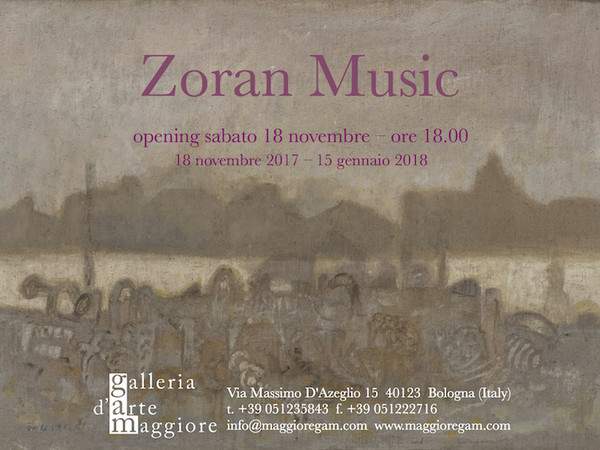Zoran Music on display at the Galleria d'Arte Maggiore in Bologna
From November 18, 2017 to January 15, 2018, an exhibition dedicated to Zoran Mušič (Boccavizza, Feb. 12, 1909 - Venice, May 25, 2005) will be held at the Galleria d’Arte Maggiore G.A.M. in Bologna. Curated by Flaminio Gualdoni, the exhibition offers a retrospective of the Slovenian artist’s work of the last fifty years.
From Dalmatian landscapes to Italian landscapes, from portraits to still lifes to the horror of concentration camps, addressed in the series “Nous ne sommes pas les derniers” (translation: “We are not the last ones”), the exhibition showcases all the themes tackled by Music in his creative cycles. The works thus cover a chronological span of almost fifty years, from the 1940s to the latest creations of the 1990s, returning a comprehensive and interesting portrait of an artistic quest that is still relevant today.
Zoran Mušič was a painter and printmaker who, having completed his studies at theZagreb Academy of Art in 1934, set off on journeys throughout Europe, between 1935 and 1940, between Spain and Croatia, and then settled in Italy (Venice and Trieste) in 1943, where he married his inspirational muse Ida Barbarigo Cadorin. In 1950, in Venice, he won the Gualino Prize at the Biennale, while in 1951 he was awarded, together with the Italian painter Antonio Corpora, the Paris Prize, organized in Cortina d’Ampezzo by the Italian Cultural Center in Paris on the advice of Campigli and Severini. A new phase of his painting evolved around the depiction of the Dalmatian landscapes of his youth, and then focused on Italian landscapes.
He was stylistically influenced by Byzantine mosaics and icons in Venice.
In the 1950s he spent some time working in Paris, studying French “lyrical abstraction,” and then returned to his Venetian atelier. In 1956 and 1960 he again participated in the Biennale. After receiving numerous awards for his graphic work, beginning in the 1960s Mušič’s organic motifs became increasingly abstract and his compositions abandoned the canons of three-dimensionality.
It was between 1970 and 1976 when Mušič produced the aforementioned series titled “Nous ne sommes pas les derniers,” in which the artist transformed the terror and hell of imprisonment in the Dachau concentration camp, where he was deported in November 1944, at the height of World War II, into documents of a universal tragedy, was enormously successful and certainly the most critically acclaimed.
Mušič is also known by the nickname of “the painter of the little horses,” because of one of his recurring subjects, precisely horses. To learn more about the exhibition you can call +39 051 235843, send an e-mail to info@maggioregam.com, or visit www.maggioregam.com.
 |
| Zoran Music on display at the Galleria d'Arte Maggiore in Bologna |
Warning: the translation into English of the original Italian article was created using automatic tools. We undertake to review all articles, but we do not guarantee the total absence of inaccuracies in the translation due to the program. You can find the original by clicking on the ITA button. If you find any mistake,please contact us.



























